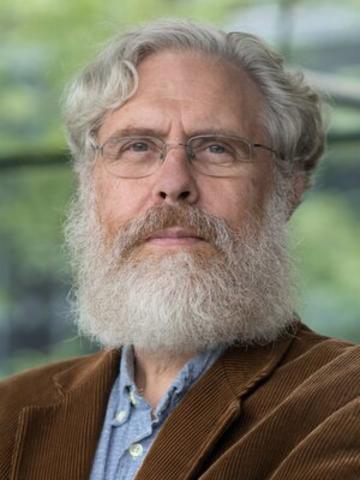College News
Could genetically enhanced elephants help reverse climate change?

Could the introduction of genetically enhanced elephants to the Arctic help reverse climate change? This seemingly far-fetched suggestion was quickly shown to be a possible reality when Professor George Church (Harvard University) spoke on "New Technologies to Enhance Endangered Species and Ecosystems via Diverse/Extinct DNA". The College's 8th Lorna Casselton Memorial Lecture given to an audience of over 150 attendees from across the globe on Thursday, 6 May 2022.
The focus of Professor Church's lecture was on how new advances in the editing of DNA in selected keystone species could be potentially leveraged to develop effective solutions for relatively rapid deployment in the decarbonisation of ecosystems that could positively impact the carbon footprint of the Earth as whole.
Ground-breaking research by Professor Church and members of his laboratory has demonstrated that it is possible to genetically enhance species, such as elephants, which possess key attributes for reducing the thousands of gigatons of soil carbon, or methane, stored in the top soil in Arctic regions such as Siberia, Canada and Alaska.
Since methane can be nearly a hundred times worse than carbon dioxide for global warming, the prospect of decreasing the massive reserves of this contained in the region's top soil could be transformational in addressing the current climate crisis. As Professor Church explained, in contrast to the thousands of gigatons of tundra soil carbon, humans generate under ten gigatons of carbon per year which makes tackling the far larger source a strategic priority.
The plan being worked on by Professor Church and his research group together with project partners is to reintroduce genetically enhanced elephant species to Arctic ecosystems which, through the elephants' propensity to uproot trees, can play a pivotal role in converting Arctic forest into grassland - this can in turn then cool the temperature of the region's top soil and keep the methane from being expelled into the air and causing global warming.
Professor Church posited that the key is in genetically engineering an elephant population suited to Arctic conditions by drawing on both diverse contemporary elephant DNA and that of extinct species such as woolly mammoths.
Perhaps one of the most fascinating insights shared by Professor Church was the expectation for the first such genetically engineered elephant calf to be born within six years with the ability to scale beyond that to an enhanced elephant population of some several thousand that could be introduced into Arctic areas with high carbon and low human populations soon thereafter. Professor Church then went on to discuss how existing genomic research and techniques could be leveraged to provide elephants with genetic advantages both in relation to their reintroduction to Arctic areas through their engineered resistance to cold temperatures and in strengthening the health of elephant populations more generally through their engineered resistance to pathogens.
the key is in genetically engineering an elephant population suited to Arctic conditions by drawing on both diverse contemporary elephant DNA and that of extinct species such as woolly mammoths.
He also drew upon the example of the reintroduction of wolves to Yellowstone National Park during the mid-1990s to highlight how a single keystone species could have significant positive implications for both the flora and fauna of a given ecosystem. In that case, the reappearance of wolves had resulted in the natural culling of over-grazing herbivore populations that in turn led to willow tree regrowth which benefited beaver populations and culminated in the restoration of Yellowstone's lakes and ponds.
Professor Church proceeded to cite several high profile examples of such 'rewilding' efforts from the California condor to the American bison, which aimed to demonstrate yet another aspect of the feasibility that elephant ancestors hunted to extinction across the Arctic thousands of years ago could themselves be `rewilded' in order to help restore Arctic grasslands to something closer to their prehistoric state, thereby making a huge impact on current levels of global warming.
Professor Church's inspiring talk was followed by a lively Q&A session in which many of the points on how these genomic techniques work as well as their ethical implications were explored further with refreshing openness and generated much excitement at the prospects for the future.
The video of the lecture can be seen here (https://www.stx.ox.ac.uk/event/new-technologies-to-enhance-endangered-species-and-ecosystems-via-diverse/extinct-dna).





